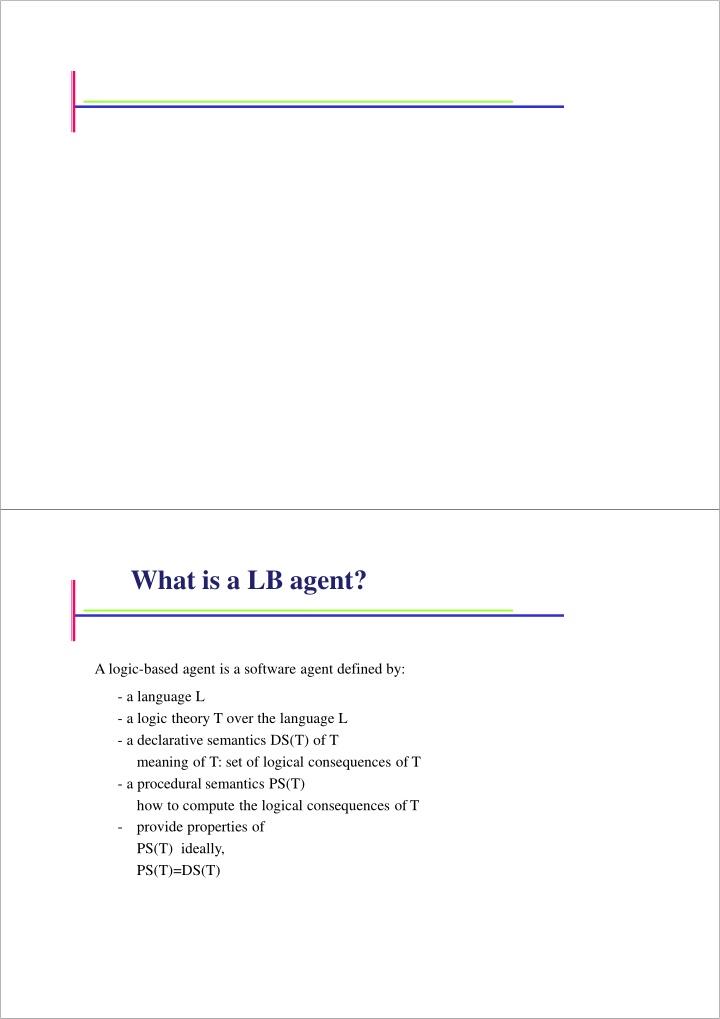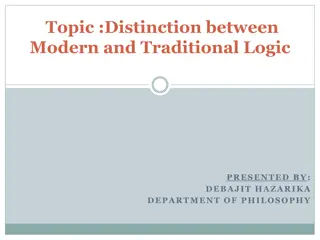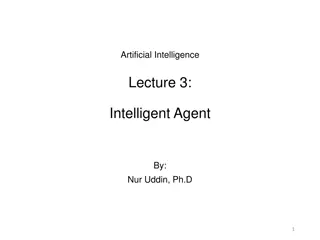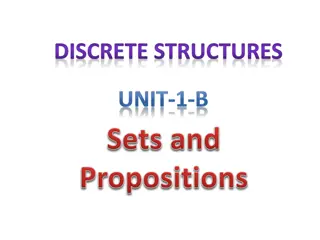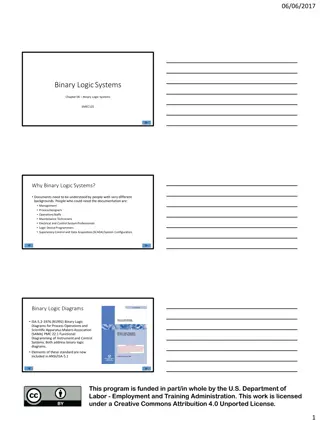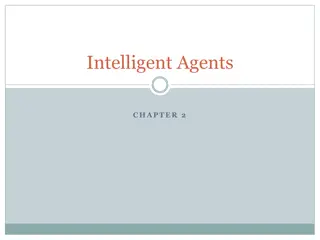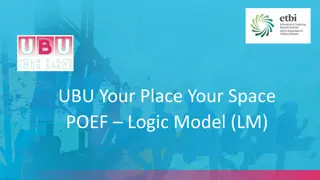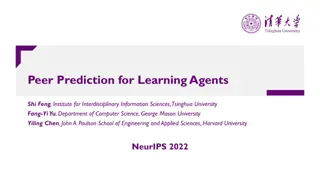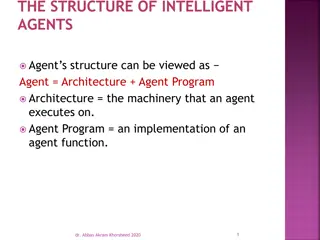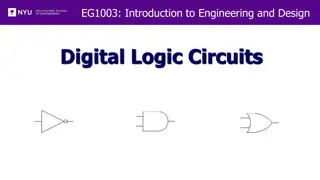Logic-Based Agents: Definition and Capabilities
Logic-based agents are software agents defined by a language and logic theory, with declarative and procedural semantics. These agents can reason, react to the environment, update their knowledge, interact with other agents, and more. Examples illustrate how these agents make decisions and preferences, with the ability to abduce hypotheses. The architecture of such agents involves various components for rational and reactive behaviors.
Download Presentation

Please find below an Image/Link to download the presentation.
The content on the website is provided AS IS for your information and personal use only. It may not be sold, licensed, or shared on other websites without obtaining consent from the author.If you encounter any issues during the download, it is possible that the publisher has removed the file from their server.
You are allowed to download the files provided on this website for personal or commercial use, subject to the condition that they are used lawfully. All files are the property of their respective owners.
The content on the website is provided AS IS for your information and personal use only. It may not be sold, licensed, or shared on other websites without obtaining consent from the author.
E N D
Presentation Transcript
What is a LB agent? A logic-based agent is a software agent defined by: - a language L - a logic theory T over the language L - a declarative semantics DS(T) of T meaning of T: set of logical consequences of T - a procedural semantics PS(T) how to compute the logical consequences ofT - provide properties of PS(T) ideally, PS(T)=DS(T)
Capabilities of ouragents We propose an approach to agents that can: - reason and react to the environment (including other agents) - update their own knowledge, reactions and goals - interact by updating the theory of another agent - decide whether to accept an update depending on the requesting agent - prefer among possible choices - abduce hypotheses to explain observations Updating agents Updating agent: a rational, reactive agent that can dynamically change its own knowledge and goals - makes observations - updates its knowledge, reactions and goals - thinks a bit (rational) - selects and executes an action (reactive)
Example 1 sleep not watch_tv watch_tv tv_on tv_on ?-sleep no S1: sleep set(alarm_clock) ?-sleep yes not tv_on power_failure power_failure S2: action: set (alarm_clock) ?-sleep no S3: not power_failure Preferring agents Preferring agent: an agent that is able to prefer knowledge and reactions when several alternatives are possible - agents can express preferences about their own rules and hypotheses - preferences can be updated, possibly on advice from others
Example 2 Let the theory of an agent John contain: ?-work yes (r1) work not money (r2) beach money, not mountain (r3) mountain money, not beach (r4) summer (r5) not money r2 < r3 summer S1: ?-work no ?-mountain no ?-beach yes S2: money Example 3 Let A={fire, smoking(john)} be the hypotheses (abducibles) of an agent Mary smoke fire smoke smoking(john) S1: ?-smoke {fire} {smoking(john)} fire give_alarm smoking(john) scream fire < smoking(john) at(john,pub) at(john,pub) S2: ?-smoke {fire} action: give_alarm
Agent architecture Java Control Cycle InterProlog InterProlog Rational P Reactive P+R can abduce cannotabduce XSB Prolog XSB Prolog Agent architecture s implementation by MattiasEngberg Action Handler External Interface UpdateH ext.project Updates int.project C C projects Rational P Reactive P+R
Fw: logic-based controllers Use of agents as logic-based controllers (joint work with A. Lombardi) - simple artificial world: balloon environment Fw: agent organizational structures Formalize organizational structures for epistemic multi-agent systems (eMAS) - groups, institutions, societies, etc. - norms, regulations, etc. Ongoing implementation of a platform supporting the interactions of our logic-based agents as well as some forms of agent structures (by Mattias Blixt)
Fw: user preference information in query answering Use of preference reasoning at query time to facilitate the retrieval of information wrt. users interests (joint work with A. Vit ria) how to incorporate abduction: abductive preferences leading to conditional answers depending on accepting a preference group preference: how to tackle the problem arising when we have several users query the system together Applications Applications in which our agent technology can have a significant potential to contribute are web applications, e.g. information integration how to integrate data from multiple heterogeneous sources and to provide a uniform interface, e.g. to provide info about movies web-site management self-reconfigurable and adaptive web sites declarative representation of web sites allows: -to automatically reconstruct them, e.g. on usage patterns and can adapt themselves wrt. user profiles - to enforce integrity constraints on web sites, e.g. no dangling pointers
